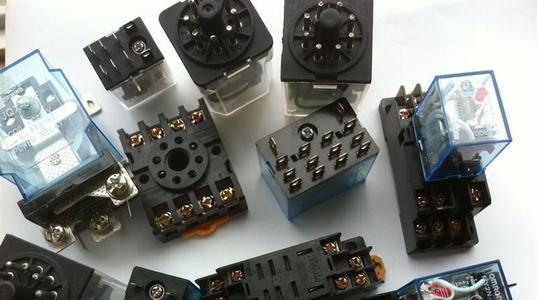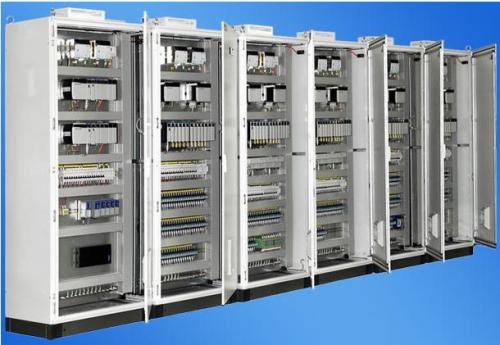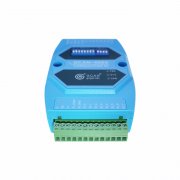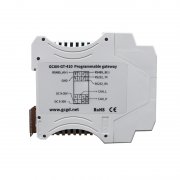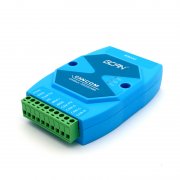Difference between PLC and Relay (1)
As electrical workers, PLC and relay are the control components that people often touch. They have the same function as control products and what the difference between PLC and Relay? The answer is control logic. The advantage of PLC control is that the function is much more controlled than the relay, such as analog control, calculus control, etc., and it is convenient to modify the program to change the control method and control object. Relay control can only achieve some simple logic control.
If you list the difference between PLC and Relay control in detail, you can probably compare it from the following aspects:
1 control logic: This is the Fundamental difference between PLC and Relay. The relay uses hard-wired logic, which uses the series or parallel connection of relay mechanical contacts and the hysteresis action of the delay relay to form the control logic. The connection is complicated and complicated, the volume is large, and the power consumption is large. After the composition, it is very difficult to change or add functions. In addition, the number of relay contacts is limited, and each has only 4-8 pairs of contacts, so the flexibility and expandability are very poor. The difference between PLC and Relay is PLC uses storage logic, its control logic is stored in memory in program mode. To change the control logic, just change the program, so it is called "soft wiring". It has less connection and small volume, plus each soft relay in PLC. The number of contacts is theoretically unlimited, so flexibility and scalability are good. PLC consists of medium and large scale integrated circuits with low power consumption.
2. Working mode: When the current is turned on, each relay in the relay control circuit is in the state of acceptance, that is, the suction should be sucked, and the suction should not be closed due to certain conditions. The difference between PLC and Relay is in PLC, each relay is in the cyclic cycle scan, and from a macro perspective, the time when each relay is restricted to be connected is short.
3 Control speed: The relay control logic relies on the mechanical action of the contact to achieve control and low operating frequency. The opening and closing action of the contacts is generally on the order of several tens of milliseconds. In addition, mechanical contacts can also cause jitter problems. The PLC is controlled by the program command to control the semiconductor circuit, and the speed is extremely fast. Generally, the execution time of a user instruction is on the order of microseconds. There is also strict synchronization inside the PLC, and there is no jitter problem. This difference between PLC and Relay makes PLC more popular in the project needs real-time control.
Due to the space limited, we are going to introduce the rest of difference between PLC and Relay in the next news. Please add our website to favourite if you like. View more products about GCAN-PLC: http://www1.gcanbox.com/fsd/gyzdh/
If you list the difference between PLC and Relay control in detail, you can probably compare it from the following aspects:
1 control logic: This is the Fundamental difference between PLC and Relay. The relay uses hard-wired logic, which uses the series or parallel connection of relay mechanical contacts and the hysteresis action of the delay relay to form the control logic. The connection is complicated and complicated, the volume is large, and the power consumption is large. After the composition, it is very difficult to change or add functions. In addition, the number of relay contacts is limited, and each has only 4-8 pairs of contacts, so the flexibility and expandability are very poor. The difference between PLC and Relay is PLC uses storage logic, its control logic is stored in memory in program mode. To change the control logic, just change the program, so it is called "soft wiring". It has less connection and small volume, plus each soft relay in PLC. The number of contacts is theoretically unlimited, so flexibility and scalability are good. PLC consists of medium and large scale integrated circuits with low power consumption.
2. Working mode: When the current is turned on, each relay in the relay control circuit is in the state of acceptance, that is, the suction should be sucked, and the suction should not be closed due to certain conditions. The difference between PLC and Relay is in PLC, each relay is in the cyclic cycle scan, and from a macro perspective, the time when each relay is restricted to be connected is short.
3 Control speed: The relay control logic relies on the mechanical action of the contact to achieve control and low operating frequency. The opening and closing action of the contacts is generally on the order of several tens of milliseconds. In addition, mechanical contacts can also cause jitter problems. The PLC is controlled by the program command to control the semiconductor circuit, and the speed is extremely fast. Generally, the execution time of a user instruction is on the order of microseconds. There is also strict synchronization inside the PLC, and there is no jitter problem. This difference between PLC and Relay makes PLC more popular in the project needs real-time control.
Due to the space limited, we are going to introduce the rest of difference between PLC and Relay in the next news. Please add our website to favourite if you like. View more products about GCAN-PLC: http://www1.gcanbox.com/fsd/gyzdh/


